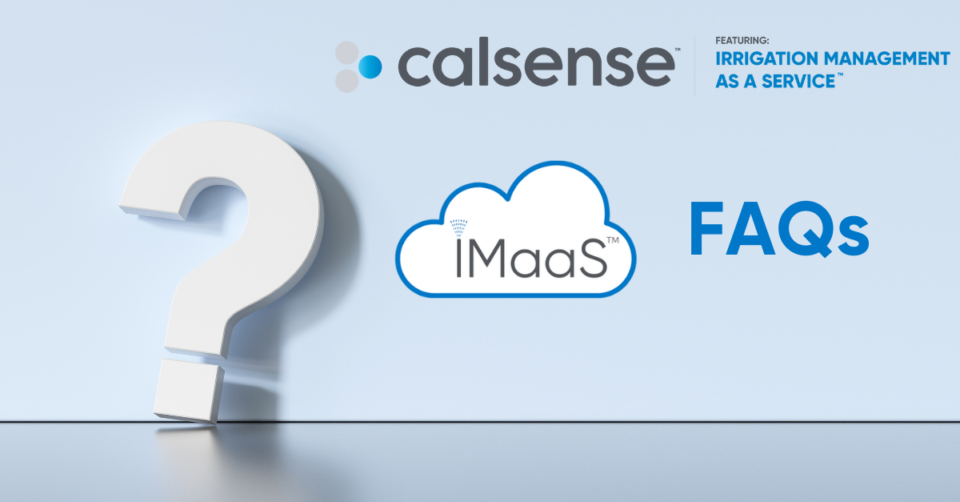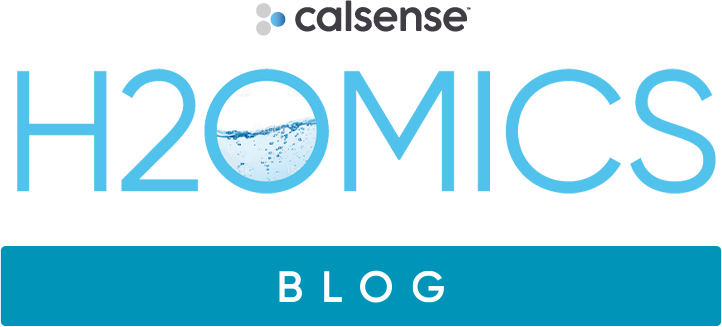FAQs on Irrigation Management as a Service™
April 28, 2022

As more people learn about our new Irrigation Management as a Service™ (IMaaS™) solution, the frequently asked questions are becoming more apparent. Here they are:
1. Why was Irrigation Management as a Service™ (IMaaS™) developed?
Irrigation Management as a Service (IMaaS) was developed to make smart irrigation more accessible to those who need it. After conducting thorough market research, Calsense determined the need is significant and that Calsense’s strong reputation for world-class support and innovation put it in the unique position of being able to lead this new era of smart irrigation control. A few of the macro trends driving the timing of IMaaS include:
- Climate change, drought and the urgent need for water conservation, especially in the western United States
- Organizations are struggling with recruiting and retention
- Applications are moving to the cloud
- Procurement methods and budgets are evolving
2. What is IMaaS?
IMaaS is an “as a service” smart irrigation control solution offered by Calsense. It provides customers with a turnkey approach to smart irrigation management. IMaaS can include components provided by Calsense, its contractors and/or your team, depending on budgets, current and anticipated staffing levels and where your organization’s priorities need to be.
3. Which types of customers are best suited for IMaaS?
Generally, IMaaS was designed to make smart irrigation control more accessible for municipalities (parks, roadway landscapes, etc.), school districts, universities, departments of transportation and homeowners’ associations, however within these segments, the following criteria are believed to identify the best candidates for the offering:
- Don’t have the capital budget and/or the expertise/labor to deploy and manage a smart irrigation management system
- Want to deploy smart irrigation management widely, but are forced to roll the system out over many years due to capital budget constraints
- Often outsource parts of their operation to third party contractors, or are struggling to find and retain staff
- Are used to buying via subscription (e.g., cellular data plans, leased vehicles, etc.)
4. Is IMaaS financing?
No. IMaaS is a service, where all needed hardware, software and services are made available to the customer. Think of it like you would your subscription to Netflix or Office 365.
5. How does the customer pay when signing up for Irrigation Management as a Service?
Generally, IMaaS customers will be billed for the service annually, in advance of each year.
6. With IMaaS, can an organization subscribe to the equipment only, without any additional services?
Yes, if they are staffed to cover their own services. In the end, Calsense wants the customer to wind up with a complete solution, but Calsense is happy to simply complement what customers can and want to do in-house.
7. With IMaaS, how are expansions to an IMaaS customer’s system handled as it relates to the term of the service contract?
Add-ons become part of the overall agreement with a contract amendment, which can either use the original term of the contract or extend the whole contract by whatever amount of time has passed since the original agreement.
8. How often will reports be provided to the customer?
Generally, although configurable, alerts are available in real-time, whereas reports will be generated and shared with IMaaS customers monthly.
9. Who gets alerts?
System alerts will be shared with Calsense, the customer and any contractors involved in keeping the system operational.
10. What happens at the end of the IMaaS term?
Generally, the IMaaS term is 10 years. As customers approach the end of the term, there are four options to consider:
- Step back, assess what needs to be upgraded or expanded and then amend the agreement to reflect a 10-year renewal.
- Continue on (without additional upgrades), for the cost of ongoing services only.
- Buy the hardware for fair market value at that point in time.
- Terminate the agreement.
11. Who pays for upgrades and repairs?
During the term of the IMaaS agreement, generally, Calsense pays for any needed upgrades or repairs.
12. How will my people be impacted?
The intent with IMaaS is to complement your existing staff. If your staff can provide certain services in-house, Calsense will take those services out of the IMaaS package. If on the other hand you want to have Calsense provide those services so that your staff can work on other priorities, Calsense can do that too.
13. What services are available?
Calsense breaks services into two categories: 1) up-front services; and 2) ongoing services. Up-front services are those services that are meant to get the solution installed, configured and ready to go-live. Ongoing services are the services that will keep the solution up and running optimally, for the term of the agreement. Ask about our Proposal Letter for more detail.
14. What happens if my organization isn’t able to appropriate funds at some point during the agreement?
There is language in the IMaaS agreement that enables customers to exit the agreement in this scenario, however the caveat is that Calsense can’t be replaced by another solution during the remainder of the agreement’s term.
15. If I elect to include installation, who selects the contractor?
Calsense will ask for your list of reliable contractors as a starting point. From there, Calsense will vet the list to ensure quality, reliability, competitive price, etc. If it can’t find a suitable contractor within the list provided, Calsense will search more broadly.
16. Can I elect to have Alerts and reports sent to me more often?
Yes, alerting and reporting are very configurable, based on specific customers’ needs.
17. If I select the monitoring option, will Calsense be doing the monitoring and reporting?
Yes, this falls into the “Analytics” category, which includes monitoring, analytics and reporting.
If you have additional questions or would like to learn more, please contact us here.
